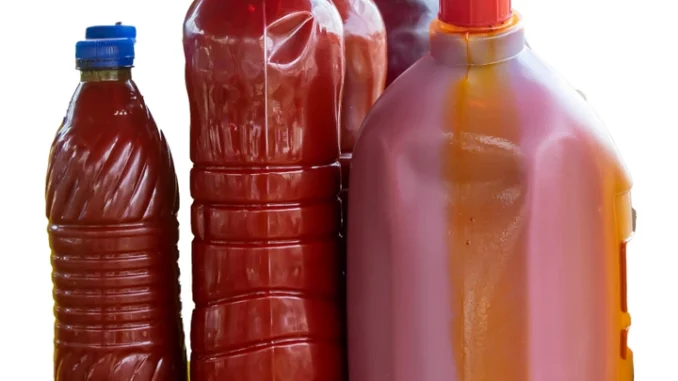
Palm oil is made from the fruit of the African oil palm. It’s been an important type of oil for several millennia, however, over the past several decades, it has become one of the most produced oils in the world. This is because palm oil is extremely versatile — it’s semi-solid at room temperature so it can be used as a spread, it’s resistant to oxidation so it can make products last longer, and it can withstand high temperatures making it perfect for frying food.
In this article, we’ll be discussing how to identify quality palm oil to avoid buying fake. Note that all findings in this article are gotten from a reputable health site Verywell Health.
How to identify quality palm oil to avoid buying fake
(a) Thickness: Quality palm oil doesn’t look sticky or lumpy when been poured, but bad or fake palm oil usually feels lumpy when been poured, and even when fresh.
(b) Hand rubbing test: When good palm oil is rubbed on the palm of your hand, it always gives a shinny and glossy stain on the palm which can be cleaned easily. But when you rub a fake palm oil on your palm, it leaves a reddish color stain which appears like a dye stain on the palm which is usually difficult to clean or wash off.
(c) Color: Color can be a great way to differentiate quality Palm Oil but you can easily get deceived because of the popular use of Sudan-4 colourant. Again, most Oil from the North is pure red while those down South are reddish-black color. However, quality Oil would typically have two colors when bottled – a reddish-black top and reddish-yellow bottom. The reddish-yellow comes from the fiber and Carroten elements which gives Palm Oil some of its acclaimed properties…..S££ MOR£
S££ 10 Diseases You Can Cure With Bananas Leaves

Leave a Reply